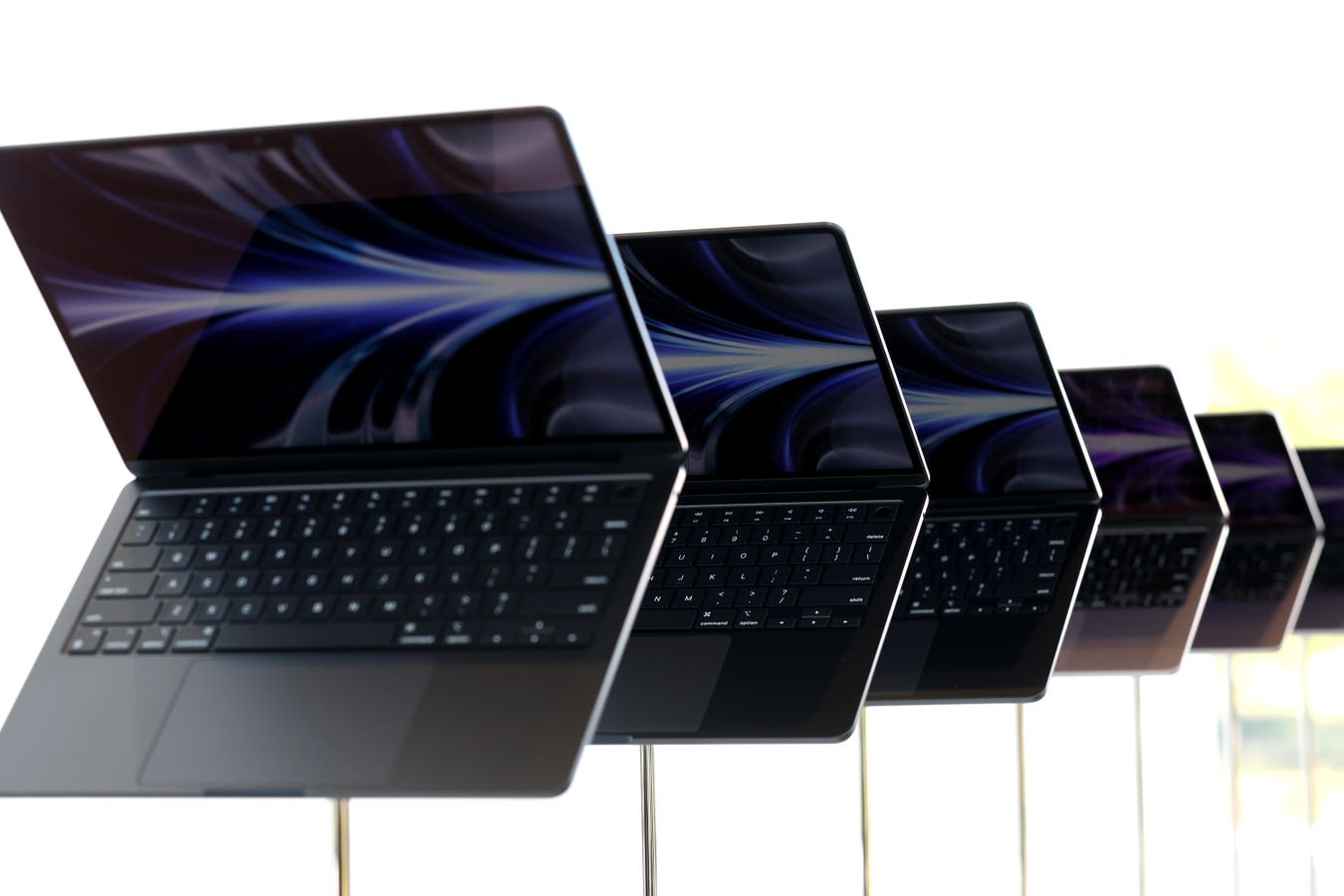Update, Monday June 2, 2025: This article has been updated with details on the next version of macOS for the MacBook Pro and MacBook Air.
Newly redesigned MacBook Air laptops are seen displayed during the WWDC at Apple Park on June 06, … More
With the next version of macOS expected to debut during WWDC 20205 in June, Apple will leave behind several older deskbound Macs and the MacBook Air. That will leave a handful of Intel-powered Macs still able to run the latest version of macOS. This is expected to be the MacBook Pro models from 2019 onwards, iMacs from 2020 onwards and Mac Pros from 2019 onwards.
Naturally, all of the Apple Silicon-powered Mac hardware remain current.
What The Old MacBook Air Owners Will Miss Out
Update, Monday June 2, 2025.
Now renumbered as macOS 26 (and likely carrying the moniker macOS Tahoe), the biggest change for consumers will come with the visual style. The UI is getting an overhaul in how it looks, rather than how it functions.
There will be new software functionality, such as the small macro-like Shortcuts application, allowing users to set up a series of “actions” to complete tasks. It’s the larger features that may not get much love and attention during the launch, such as Siri and the use of generative AI and artificial intelligence. Apple is continuing to try and find relevancy in the growing generative AI space, and while there will be advances, it is yet to deliver the promise announced at 2024’s Worldwide Developer Conference; it’s unlikely that significant promises can continue to be built on promises.
However, the biggest change is in the design. Your desk-bound Apple computer will start moving away from the traditional macOS look and head toward visionOS, Apple’s augmented reality operating system. Critically, this is a direction that Apple’s other operating systems are heading in—the iPhone, the iPad and the Mac are all heading towards the spatial computing design seen in the Apple Vision Pro.
The fact that the older hardware cannot keep up should not come as a surprise.
New MacBook Pro laptops are displayed during Apple’s Worldwide Developers Conference 2023 (Photo by … More
Which MacBook Air Models Will Disappear?
It’s worth noting that while the professionally focused Intel Macs remain inside the support window, Apple has removed the consumer-focused MacBook Air.
Given the comparatively low processing power of their Intel Core chipsets and the heavy demands being placed on modern computing thanks to generative AI and other processor-intensive artificial intelligence techniques, the MacBook Airs have finally passed the point where they simply can’t accommodate Apple’s vision of a modern operating system. Even the 2020 MacBook Pro laptops will be struggling and owners should expect this to be the last update they will see.
The Power Of The MacBook Air M1
This speaks to Apple’s decision to introduce Apple Silicon across the full range of Mac hardware. Back in 2020, the increased power and performance of the M1 saw the entry-level MacBook Air leap ahead of the Intel-powered competition. That advantage has been clawed back now, but it allows Apple to fully support those older machines with the upcoming version of macOS.
It has taken time, but Tim Cook and his team are close to ending their dependency on Intel and the excess resources required to support two platforms in macOS. One more year, and the focus can be 100 percent on its own proprietary platform and leverage all the advantages that this offers.
Now read the latest MacBook Air, MacOS and iPhone headlines in Forbes’ weekly Apple news digest…








